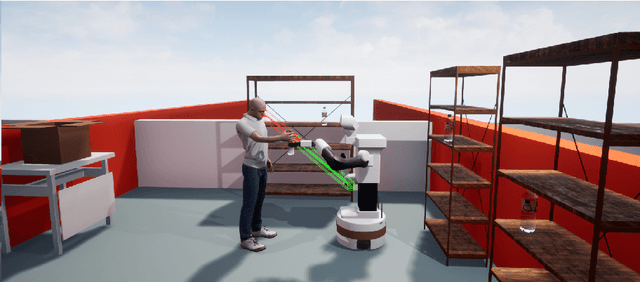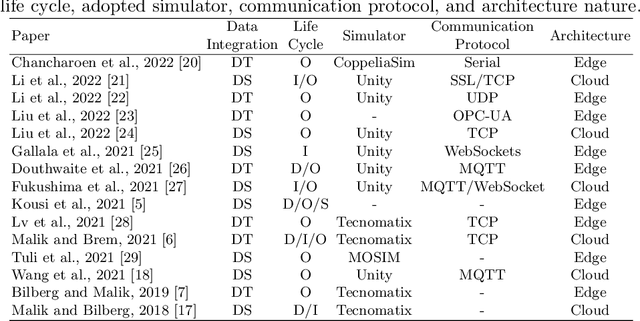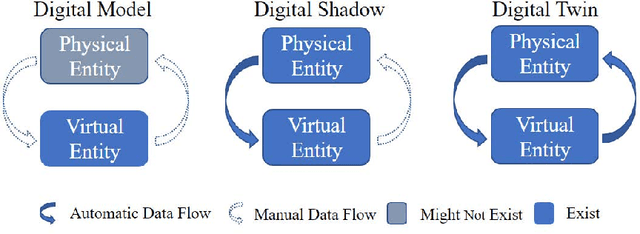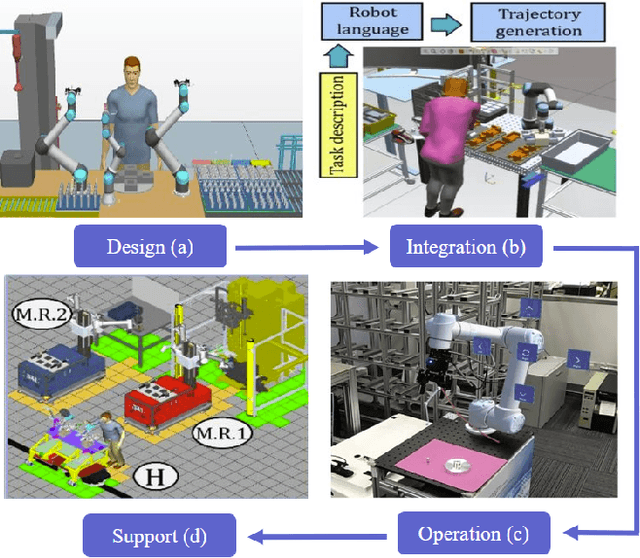Digital Twins for Human-Robot Collaboration: A Future Perspective
Paper and Code
Nov 04, 2023



As collaborative robot (Cobot) adoption in many sectors grows, so does the interest in integrating digital twins in human-robot collaboration (HRC). Virtual representations of physical systems (PT) and assets, known as digital twins, can revolutionize human-robot collaboration by enabling real-time simulation, monitoring, and control. In this article, we present a review of the state-of-the-art and our perspective on the future of digital twins (DT) in human-robot collaboration. We argue that DT will be crucial in increasing the efficiency and effectiveness of these systems by presenting compelling evidence and a concise vision of the future of DT in human-robot collaboration, as well as insights into the possible advantages and challenges associated with their integration.
 Add to Chrome
Add to Chrome Add to Firefox
Add to Firefox Add to Edge
Add to Edge